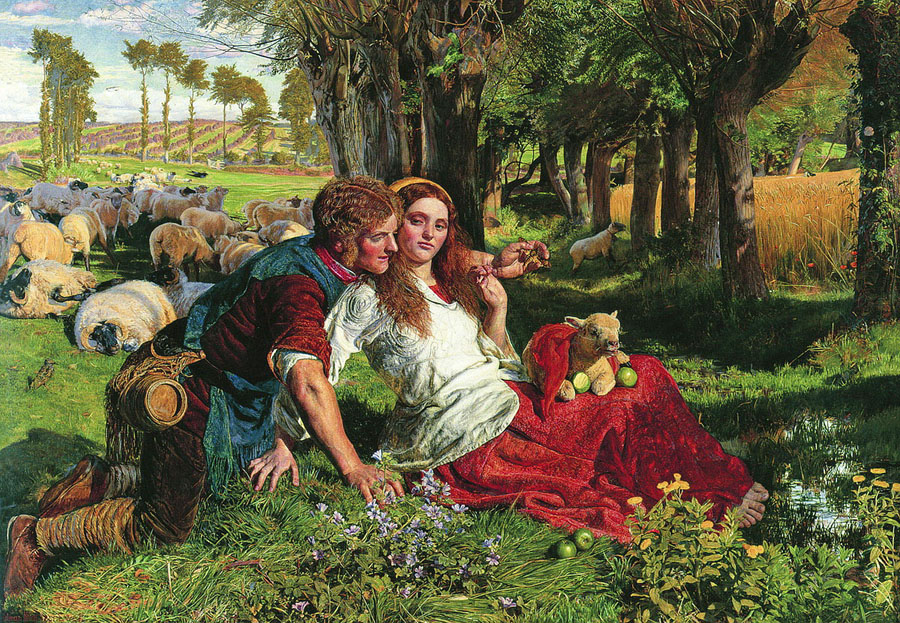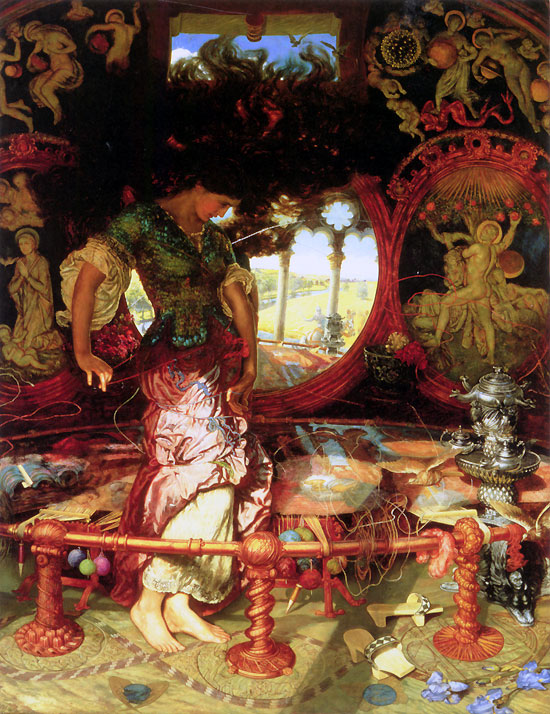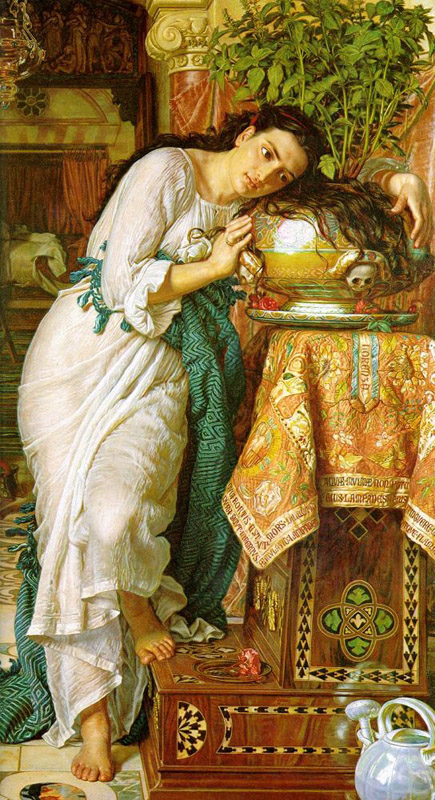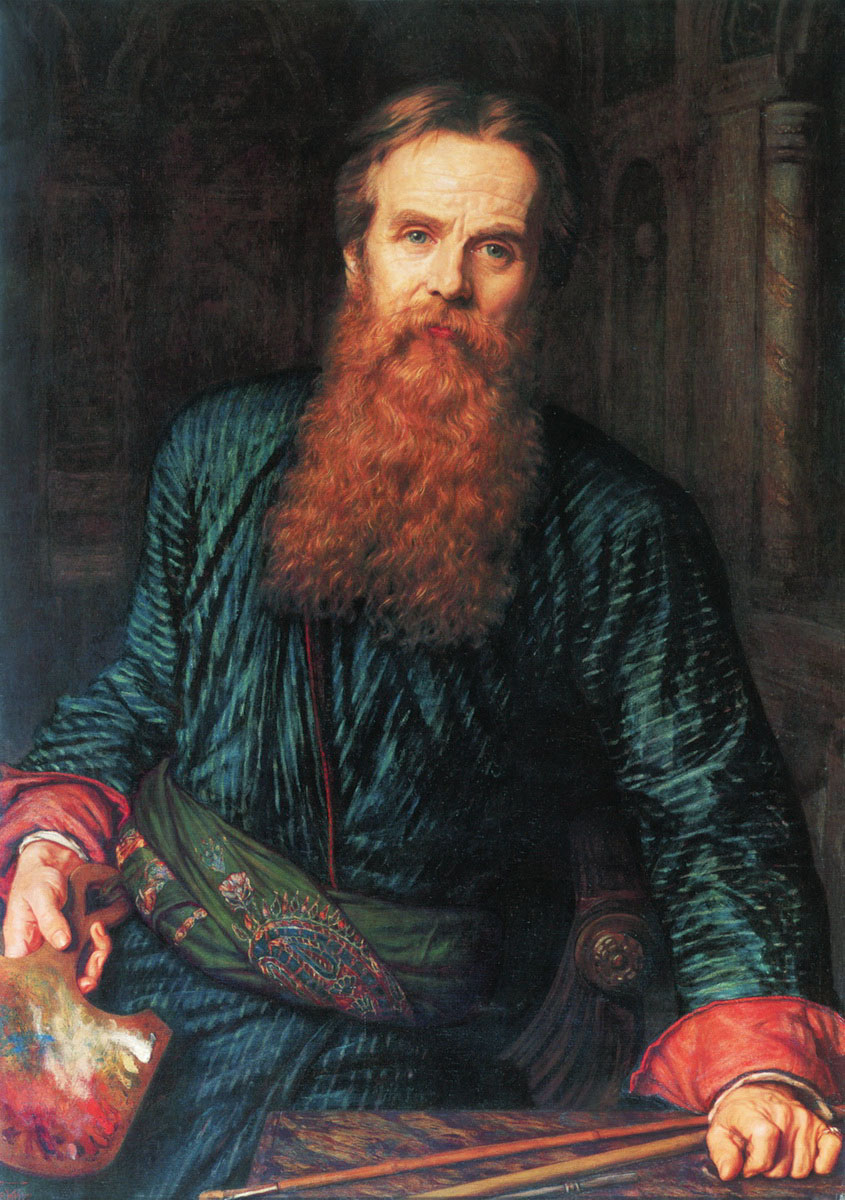William Holman Hunt, one of the founding members of the Pre-Raphaelite Brotherhood, was born on this day in 1827. Today I’d like to share some of my favorite Holman Hunt works.

Truth to nature was one of the main tenets of the Pre-Raphaelite Brotherhood and an excellent example of this can be seen in the Death’s Head moth in William Holman Hunt’s painting The Hireling Shepherd (above). I’ve blogged about it many times before; it’s part of my Shakespeare post that I share yearly on the Bard’s birthday.
William Holman Hunt took inspiration from a quotation of King Lear for his paintingThe Hireling Shepherd. It is from the lines of the Fool, who says:
Sleepest or wakest thou, jolly shepherd?
Thy sheep be in the corn.
And for one blast of thy minikin mouth,
Thy sheep shall take no harm.
Hunt portrays the shepherd as neglecting his flock, too busy flirting with a beautiful young lady to see that they are falling ill. In his hand, he holds a Death’s Head moth. The moth is impressive once you notice it; Hunt captured it in minute detail. The shepherdess, also distracted and neglectful, has a young lamb in her lap that will also soon fall ill since it is eating a green apple.


Many Pre-Raphaelite artists painted the Lady of Shalott, some of them repeatedly. But only Holman Hunt depicted her hair whipping wildly, perhaps by supernatural means, when the Lady has fallen in love with a vision of Lancelot and decides to ignore the curse that has come upon her. Look closely at the bodice Holman Hunt has given her and it looks strikingly similar to Dame Ellen Terry’s famous beetle-wing gown.
I’ve saved my favorite Holman Hunt for last. When I first saw Isabella and the Pot of Basil in person, she loomed over me in a compelling way that I can not quite describe. This, to me, is one of his most haunting yet beautiful works and it is an excellent example of a macabre subject depicted in an alluring way.

In the art of the Pre-Raphaelites, we see a marriage of visual art and literature. Their early works are filled with scenes from the literary world, taken from authors such as Shakespeare, Tennyson, and Keats. These works demonstrate the interconnection of artistic expression and the written word in a way that goes far deeper than merely illustrating the text. When they painted a depiction based on a Keats poem, they breathed life and brilliant color into the painting making it almost a synthesis of the poem itself. In William Holman Hunt’s Isabella and the Pot of Basil, we don’t see the backstory at all. We aren’t shown her lover Lorenzo, or her brothers who murdered him. But despite what is left out, the painting is a powerful one that my words fail to describe. In person it is arresting; Isabella is practically life size and she’s painted so vividly that I almost had to stop myself from reaching out to touch her face. The room she stands in beckons to you; the tiled floor looks as if it would be cold on your feet. The majolica pot, symbolically decorated with a skull, almost dares you to lightly touch it. Her lover’s head is buried inside. She embraces it, her hair mingling with the basil leaves. It’s a painting of all-consuming grief. It’s a painting that encompasses both life and death. And in this one work, Holman Hunt has touched upon the germ of Keats’ poem. In doing so, he keeps the poem alive. Viewers, having seen the painting, will return to the words. Readers, gripped by the poem, may seek the painting out. It’s a glorious cycle.
More:
William Holman Hunt at The Victorian Web
Leaves in wintry weather by Kirsty Stonell Walker

